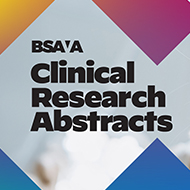It is the first increase after consecutive years of decrease.
A new report published by the World Organisation for Animal Health (WOAH) has revealed a global increase in antimicrobial use within the animal sector.
The statistics, collected between 2019 and 2021, showed that there had been a two per cent increase in antimicrobial use in animals.
The concerning increase follows several consecutive years of significantly decreasing antimicrobial usage. WOAH believes that this trend could lead to progress against antimicrobial resistance (AMR) slowing down in the animal sector.
AMR is currently considered to be a major concern for humans, animals and the environment. When antimicrobials are misused or overused diseases can develop a resistance to their effects, meaning the diseases are much harder to manage.
Economic reports from the Global Leaders Group (GLG) predict a loss of 1.8 years of life expectancy worldwide by 2035, as a result of AMR.
AMR can be a natural phenomenon, however it is greatly advanced by the irresponsible use of antimicrobials.
WOAH suggests that efficient monitoring could lead to informed decisions on combatting AMR. It has been observing antimicrobial use in animals since 2015, as it builds its own strategy.
One of the four key actions that WOAH considers vital to its strategy is the implementation of preventative measures.
For example, it suggests that vaccines could reduce the need for antimicrobials. If they can be made available, vaccines can prevent diseases which may otherwise need antimicrobial treatment.
Despite this, WOAH says that only six cents for every ten dollars were allocated to the research and development of animal health vaccines between 2017 and 2024.
Furthermore, WOAH stated that the use of antimicrobials for growth promotion in animals still remains a contributor to AMR.
Although progress has been made in reducing this practice, it was still reported by 20 per cent of WOAH’s members. Eleven per cent were using critically important antimicrobials, such as colistin, to promote the productivity of their animals.
WOAH’s findings were presented at the ninth meeting of the GLG on AMR in Sweden. It has called for more support for the animal health sector, as it combats the threat of AMR.
Monique Eloit, WOAH director general, said: “The animal health sector plays a pivotal role in the efforts to curb AMR by promoting a more responsible use of antimicrobials.
“Therefore, it has to be adequately supported to help accelerate the response to this still growing threat.”
The full report can be found here.
Image © Shutterstock



 The BSAVA has opened submissions for the BSAVA Clinical Research Abstracts 2026.
The BSAVA has opened submissions for the BSAVA Clinical Research Abstracts 2026.